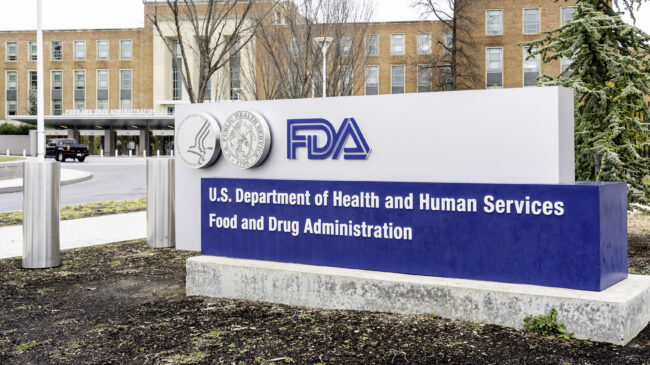The U.S. e-cigarette market is rapidly transforming—but not in a good way. Once a place of dynamic competition where small and medium-sized businesses could thrive and offer smokers innovative and safer alternatives to cigarettes, the vape market is now in chaos and only the biggest players are set to survive.
Sept. 9 was the court-imposed deadline for the Food and Drug Administration (FDA) to decide which e-cigarettes, if any, would be allowed to remain on the market and which would be banned. In the end, the FDA failed to authorize a single e-cigarette for sale and gave more than a million products outright denials upon the deadline. The agency says it needs more time to decide on the remaining products it hasn’t yet rejected.
Because of this, all e-cigarettes are now subject to FDA enforcement action. The consequences of this decision will be devastating for a once-thriving industry and a tragedy for the health of millions of Americans. Less than a week after the FDA’s deadline expired, the Cochrane Review, recognized as the gold standard for evidence-based medicine, concluded e-cigarettes were more effective in helping smokers quit than traditional nicotine replacement therapies. Moreover, the evidence that e-cigarettes are safer than cigarettes, a pathway out of smoking, and fail to act as a gateway to tobacco has only strengthened since FDA took charge of regulating e-cigarettes back in 2016.
Over the past few years, public concern and government action in relation to e-cigarettes have mainly focused on youth vaping. If that is the motivation for banning most of the e-cigarettes on the market in America, then it is a highly misguided one. For one thing, the bans will likely have little effect on youth vaping. Even before lockdowns and school closures, FDA surveys suggest the number of youth vapers had fallen by around 30 percent since 2019. E-cigarettes were still available in all kinds of flavors and various nicotine strengths, but fewer kids were interested in using them. Moreover, even amongst the small minority of youth who do vape, most will never have heard of, let alone tried the products now banned by the FDA.
The FDA bans on e-cigarettes are likely to lead to an increase in smoking. Many of the now-banned e-cigarette products were used by adults who have either quit smoking are trying to do so. Indeed, the vast majority of vapers are adult smokers and ex-smokers, and the overwhelming evidence shows that by providing smokers with a far less harmful substitute that nonetheless provides much of the same satisfaction as smoking, e-cigarettes are dramatically cutting disease risk for a vulnerable population.
FDA’s decision-makers appear to have ignored arguably the most important premise of the legislation under which their ban has been affected. Section 3 of the Tobacco Control Act outlines its purpose, which crucially includes, “to promote cessation to reduce disease risk and the social costs associated with tobacco-related diseases.” That is precisely what e-cigarettes do. So there should be no need for individual applicants, many of whom are mom-and-pop operations, to demonstrate to the FDA that their specific product has the propensity to reduce smoking and tobacco-related diseases. But that is exactly what was required of each submission. And, to nobody’s great surprise, we then witnessed a tsunami of rejections, largely due to incomplete paperwork or companies failing to provide specific evidence showing their products would benefit adult smokers more than the risk they pose to youth. As The Verge reported:
After a year-long review of millions of e-cigarette–related products, the Food and Drug Administration says it has rejected 946,000 flavored products, prohibiting them from being marketed or sold. It also said that the applications for 4.5 million products were missing materials that the agency required to make a decision. All of those products must also be removed from the market. The FDA said in a statement Thursday that it has reviewed 93 percent of the applications submitted, which included 6.5 million products.
For years, vape companies asked FDA for clear guidance on what would be required to achieve authorization. Eventually, in June 2019, the FDA provided a 55-page guidance document that contained the following helpful advice on how to demonstrate that a product is “appropriate for the protection of public health (APPH)”:
The Federal Food, Drug, and Cosmetic Act (FD&C Act) states that the finding of whether permitting the marketing of a product would be APPH will be determined, when appropriate, on the basis of well-controlled investigations (section 910(c)(5)(A)). However, section 910(c)(5)(B) of the FD&C Act also allows the agency to consider other “valid scientific evidence” if found sufficient to evaluate the tobacco product. Given the relatively new entrance of ENDS on the U.S. market, FDA understands that limited data may exist from scientific studies and analyses. If an application includes, for example, information on other products (e.g., published literature, marketing information) with appropriate bridging studies, FDA intends to review that information to determine whether it is valid scientific evidence sufficient to demonstrate that the marketing of a product would be APPH. Nonclinical studies alone are generally not sufficient to support a determination that permitting the marketing of a tobacco product would be appropriate for the protection of the public health.
Aside from the clear-as-mud bureaucrat-speak (ENDS are “electronic nicotine delivery systems” – i.e. e-cigarettes), the assertion that every producer of vape products must submit clinical studies evaluating the public health risks specific to their products is ludicrous.
That’s the trouble: FDA’s demands were both vague and absurd. Most “e-cigarette” producers actually just made a few kinds of “juice” by mixing a nicotine solution with food flavorings and diluting with propylene glycol (the stuff used in theatrical smoke machines for decades without harm) and/or vegetable glycerin. Why on earth would FDA ask all these folks to submit clinical studies? It’s bonkers.
Meanwhile, the few larger e-cigarette producers that have been able to afford armies of scientists and lawyers to prepare their submissions have produced dossiers that would not be out of place in an application for approval for a new pharmaceutical that actually is highly toxic even when used as directed. One of the largest e-cigarettes companies, Juul, filed an application stretching to over 125,000 pages with data from more than 100 studies. So far, the FDA hasn’t rejected that submission. It is still reading it.
But even that approach apparently may not be enough. One larger company, Turning Point Brands, was issued a marketing denial order (MDO) in relation to some of its vapor products even though according to the company, “The PMTA [Premarket Tobacco Product Application] denied by this MDO included an in-depth toxicological review, a clinical study, and studies on patterns and likelihood of use.”
The depressing fact is that this entire mess could have easily been avoided by starting from the premise that the category of e-cigarettes prima facie meets the public health test as set out in the Tobacco Control Act—which clearly it does—and then addressing specific issues regarding the safety of individual products by setting clear standards and requiring that producers demonstrate that they meet those standards.
If regulators are concerned about the possibility that the juice contains too much diacetyl and acetyl propionyl (the chemicals that in large enough quantities can cause “popcorn lung”), or nitrosamines (among the nastiest cancer-causing chemicals that are found in tobacco products), or other chemicals that when heated to the normal temperatures of a vape device form nasty substances (such as formaldehyde) the FDA could and should set limits on them.
If FDA is concerned about the potential for an e-cigarette device to blow up, it should require devices to conform to the ANSI/UL standard. (Yes, there is already an ANSI/UL standard for e-cigarettes.)
Most all mom-and-pop vape stores could afford to buy United States Pharmacopeia-grade nicotine and other similarly pure ingredients. They could also afford to send samples of their juice to an approved chemistry lab for evaluation to ensure that they met the standards. And they surely would have done so gladly, knowing that they would be ensuring not only compliance with FDA rules but also the safety of their customers.
The current regulatory framework for approving e-cigarettes isn’t so much a pathway, as advertised, but a mountain accessible only to a few. The consequence of the FDA’s rejection of e-cigarette products is that many businesses will now close and smokers will lose an incredibly effective alternative to traditional cigarettes that has helped millions of people quit smoking. If fewer people switch from cigarettes to e-cigarettes, it means more Americans will die from smoking-related diseases.


